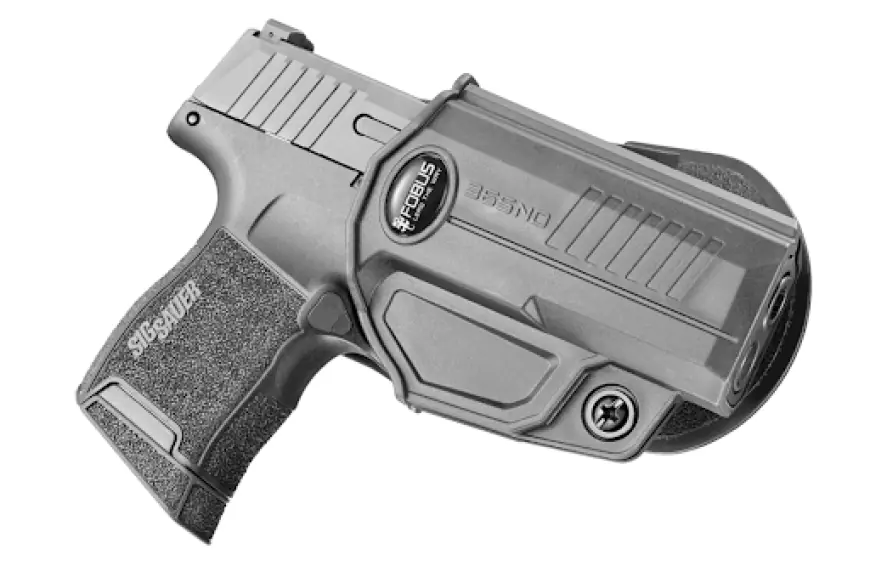OWB Holsters Explained: The Ultimate Guide to Concealed Carry Comfort
When it comes to concealed carry, choosing the right holster can significantly impact your comfort, accessibility, and overall firearm safety. While inside-the-waistband (IWB) holsters dominate the concealed carry conversation, outside-the-waistband OWB gun holsters .

When it comes to concealed carry, choosing the right holster can significantly impact your comfort, accessibility, and overall firearm safety. While inside-the-waistband (IWB) holsters dominate the concealed carry conversation, outside-the-waistband OWB gun holsters are gaining traction among responsible gun owners for their comfort, accessibility, and adaptability. Whether you're a first-time carrier or a seasoned firearm enthusiast, understanding the role of an OWB holster is essential to making an informed and effective choice.
What Is an OWB Holster?
An OWB holster is designed to sit outside the waistband of your pants, typically attached to your belt. Unlike IWB holsters, which tuck inside your pants and press against your body, OWB holsters offer a more relaxed carry style. They are usually easier to draw from and can be more comfortable for extended wear, especially in warmer climates or for those who find IWB holsters restrictive.
Key Benefits of OWB Holsters
Enhanced Comfort for Daily Carry
One of the standout features of an OWB holster is comfort. Because it doesn’t press against your skin, it reduces chafing and discomfort during long periods of wear. This makes it a top choice for individuals who carry all day or for professionals who need to maintain readiness without sacrificing comfort.
Faster and Easier Draw
An OWB holster allows quicker access to your firearm compared to IWB options. This can make a crucial difference in high-stress scenarios where speed is essential. The external positioning also allows for a more natural draw angle and improved grip access.
Greater Compatibility with Firearm Accessories
Because OWB holsters are less constrained by space, they typically accommodate attachments like weapon-mounted lights, red dot sights, and extended barrels. This makes them especially appealing to those who have customized their firearms for tactical or home defense use.
Are OWB Holsters Good for Concealed Carry?
Concealment Challenges and Solutions
By design, OWB holsters are more visible, which poses a challenge for those seeking complete concealment. However, with the right clothing—such as long, untucked shirts, jackets, or vests—they can be effectively concealed. Modern low-profile OWB holsters are also crafted to hug the body and reduce printing (the visible outline of the firearm through clothing).
Best OWB Holsters for Concealed Carry
Some manufacturers now design OWB holsters specifically for concealed carry. These models prioritize slimness, high ride positions, and angled contours to enhance concealability. Materials like Kydex and molded polymer also help maintain a close fit to the body.
Choosing the Right OWB Holster for You
Consider Your Lifestyle and Wardrobe
Your daily clothing choices, body type, and activity level play a huge role in determining the effectiveness of an OWB holster. If you often wear jackets or button-up shirts, OWB can be a seamless fit. However, if your wardrobe leans toward tighter clothing or minimal layering, IWB might provide better concealment.
Material Options: Leather, Kydex, or Hybrid?
-
Leather OWB holsters offer a classic look and feel, molding to your body over time.
-
Kydex holsters are durable, lightweight, and typically more resistant to sweat and weather.
-
Hybrid holsters combine a rigid shell with a padded backing, offering a mix of comfort and retention.
Retention and Safety Features
Good OWB holsters provide passive or active retention to prevent accidental dislodging of the firearm. Passive retention relies on a tight fit, while active retention includes mechanisms like thumb breaks or locking levers. Depending on your comfort level and use case, choose a holster with the right balance of accessibility and security.
Legal Considerations for OWB Carry
Before choosing an OWB holster, it's essential to understand your local concealed carry laws. Some jurisdictions have strict rules about open carry or printing, which can impact the legality of carrying with an OWB holster. Always check with local law enforcement or legal resources to ensure compliance.
Tips for Concealing an OWB Holster Successfully
-
Choose a holster with a high ride and forward cant.
-
Wear structured outer garments like jackets, flannel shirts, or vests.
-
Opt for darker colors and patterns to reduce printing.
-
Position the holster at the 3 to 4 o’clock angle for optimal concealment and access.
Conclusion
Holsters IWB and OWB offer a compelling option for those prioritizing comfort, draw speed, and compatibility with firearm accessories. While they may pose unique concealment challenges, proper clothing choices and modern low-profile designs have made them more viable for everyday concealed carry. If you're looking to strike a balance between accessibility and discretion, the OWB holster deserves a place in your rotation. Whether you're heading to the range, carrying for self-defense, or simply value all-day comfort, understanding the nuances of OWB holsters is key to making the right decision for your lifestyle.
What's Your Reaction?
 Like
0
Like
0
 Dislike
0
Dislike
0
 Love
0
Love
0
 Funny
0
Funny
0
 Angry
0
Angry
0
 Sad
0
Sad
0
 Wow
0
Wow
0

















































